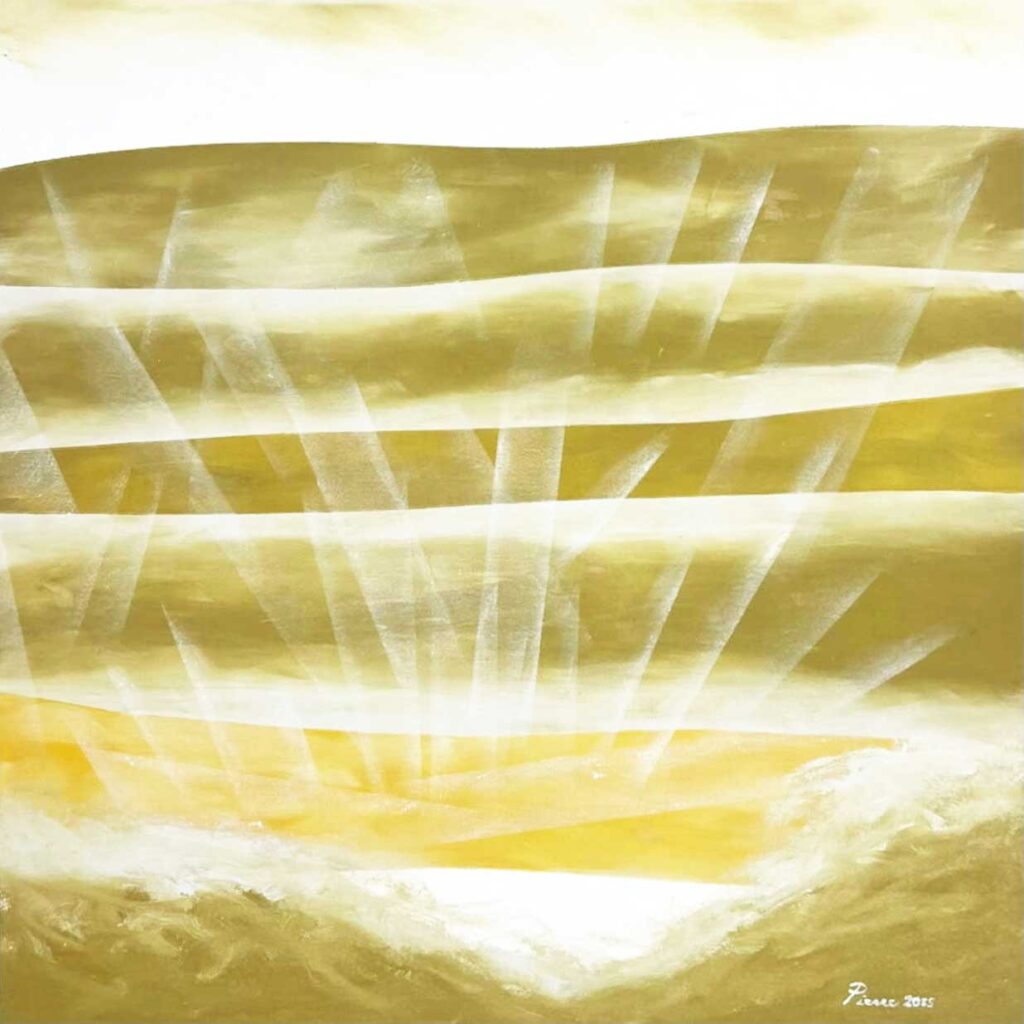Flooding in the Philippines begins long before the rain falls. It starts with decisions made in government halls, where power and money shape priorities and public safety is an afterthought. Roads are built to win elections. Contracts reward loyalty. Budgets buy influence. The water that invades homes carries more than runoff. It bears the weight of broken systems and ignored responsibilities.
Artist Jericho Pierre Curanes confronts this truth in Sin of Greed. On a 36-by-36-inch acrylic on canvas, layers of gold and white form a calm, polished surface that hides a pattern of unfinished work, rushed approvals, and decisions driven by kickbacks, with people’s welfare pushed aside. What seems composed is built on neglect.
“I made this piece because we often chase gold thinking it will make us whole,” Curanes says. “But the more we take, the more we lose sight of what really matters.” His work shows that disaster begins with human choices made long before the skies open.
The pattern repeats year after year. Streets flood. Homes collapse. The same communities suffer. Funds are released for protection, but dikes fail, drainage clogs, and pumps stop working. Some projects stay on paper, ghost projects that never existed. Others fall apart soon after completion. The damage returns because the root cause remains unchanged.

Flood control should save lives, yet it is abused to exploit. What should protect communities becomes a tool for patronage and profit. Some projects exist only to display names on signboards and grab attention. Instead of serving the public good, they become publicity stunts.
In Sin of Greed, gold glows with promise while concealing instability. Each layer reflects what is omitted, covered up, or pushed through for gain. Curanes urges viewers to question whether appearances have replaced accountability. “The layers in this piece are a mirror of how greed piles up over time, blinding us and trapping us,” he says.
Greed takes many forms. At times, it hides behind sanitized language like development, progress, and efficiency. At other times, it flaunts itself openly. We even have a word for this kind of greed that we seem to have forgotten: imeldific, a term for extravagance so excessive and ostentatious it crosses into vulgarity. This mindset, born of unchecked power, still shapes how public resources are spent and how accountability is evaded.
Uruguayan President Jose Mujica offered a sharp contrast. “When you buy something, you’re not paying with money. You’re paying with the hours of your life,” he said. The late Mujica lived simply, gave most of his salary away, and rejected political excess. His example proves that greed is a choice and that leadership rooted in humility and service can endure.
At the base of Curanes’ painting, a faint light breaks through the buildup. It points to what remains beneath the weight of corruption and what might guide us back. “No matter how heavy those layers become, there will always be a light underneath, reminding us that true wealth is found in clarity, humility, contentment, and the truths we often overlook,” he adds.
Curanes, 25, began painting in 2014 and was a GSIS Art Competition finalist in 2021. He builds on the artistic legacy of his grandfather Nelson and uncle Janddie Castillo. Sin of Greed is part of 777, a group exhibit with cousins John Clark Castillo and John Kent Castillo, Allan Escober, and Raphael Barroso, running from October 1 to December 31 at Il Terrazzo in Quezon City.
The painting shows how corruption builds layer upon layer long before the first drop of rain. What pours into streets and homes is more than water; it is greed made visible, built from systems that enrich the few and endanger the many. The flood returns again and again, shaped by actions that betray public trust and deepen the cost we all bear.




